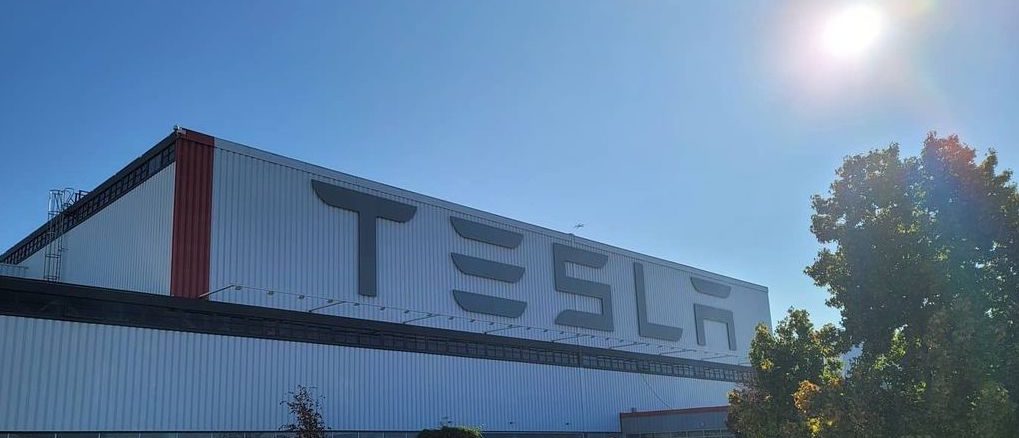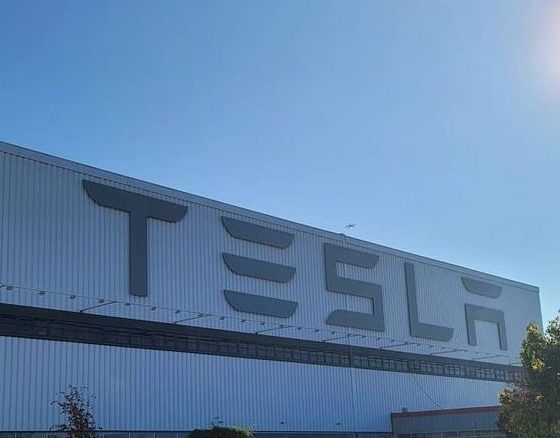

News
Tesla FSD’s prolonged release doesn’t make it a ‘fraud,’ company says
Tesla Full Self-Driving’s prolonged release doesn’t make it a “fraud,” the company said in a motion to dismiss a case.
Tesla is currently involved in a class-action lawsuit from a few Autopilot and Full Self-Driving customers and has recently filed a motion to dismiss the case with the U.S. District Court in San Francisco. In that motion, a statement was made by Tesla’s attorneys that may have been taken out of context by some media reports.
Teslarati obtained a copy of the motion, and here is what we found.
After some background information on FSD, Tesla noted that each of the plaintiffs purchased a vehicle, and “all but one allegedly purchase the FSDC package.” (FSDC is an acronym for full self-driving capability.)
“Plaintiffs knew at the time of purchase that their cars were not completely autonomous. And they knew that the timeline towards more complete autonomy was contingent upon numerous factors, including software development and regulatory approval. Yet now they sue Tesla, complaining that their cars are not completely autonomous.”
The document noted that four out of five of the named plaintiffs have valid arbitration agreements with Tesla that should be enforced and cover all of their claims. The one plaintiff who opted out “advanced a consolidated complaint riddled with defects, and that should be dismissed.”
The plaintiff “sued too late–five years after he purchased his vehicle and the optional software package, well after any of his claims accrued. All of his claims are time-barred and should be dismissed. Moreover, the hundreds-of-paragraph, narrative complaint fails to support a single cognizable legal theory. The Complaint makes no mention of the parties’ written contract or Tesla’s car warranty. It instead cherry-picks numerous statements allegedly made by Tesla and attempts to manufacture claims for fraud and breach of warranty.”
Tesla’s attorneys made several statements, including that headline-worthy one regarding FSD and failure. However, the attorneys never claimed that FSD is a failure. In the document, the attorneys pointed out that the complaint “identifies no statement that Tesla made that was fraudulent.”
Additionally, it added that no there was no statement made that Tesla’s vehicles, including those equipped with the FSDC package, were fully autonomous at the time of the Plaintiff’s purchase. Tesla’s website also made it very clear that those vehicles were not.
Tesla’s attorneys noted that the plaintiff allegedly researched Tesla’s online and public statements and reviewed them before buying his vehicles. The labels of “Autopilot,” “Enhanced Autopilot,” or “Full Self-Driving Capability” didn’t mean that the vehicles were fully autonomous. Tesla’s attorneys also noted that Tesla’s user manuals plainly showed this as well.
“Nor would any reasonable consumer purchase a Tesla vehicle with the belief that it is fully autonomous based solely on these labels,” the attorneys said.
Instead, each of the plaintiffs alleged that they “decided to purchase [his or her] vehicle and the ADAS packages after researching, reviewing, and relying on Tesla’s online and other public statements.”
The plaintiff’s “assertion that Tesla promised the vehicles were already fully autonomous when they were sold rings hollow,” the attorneys stated.
“His assertion that Tesla promised to release completely autonomous capabilities ‘within a reasonable time after,’ his purchase fares no better.”
“No allegations show that Tesla promised that the FSDC package would enable full autonomy within a specified period of time. Many of the statements quoted in the Complaint did not even concern the FSDC package,” the attorneys said, adding that this makes it irrelevant to the plaintiff’s claims.
“In addition, the quoted statements were also often accompanied by and subject to the qualifier that a release of fully autonomous capabilities to the general public would require government approval, a variable over which Tesla had no control, and that any regulatory clearance would require a vast amount of data to show that completely autonomous driving is significantly safer than human driving.”
The attorneys cited another federal court that said similar statements “do not constitute fraud” because they indicate that Tesla wasn’t making the absolute representation the Plaintiff said he was.
“Same here. Especially under the heightened Rule 9(b) standard, no allegation suggests that the aspirational statements that Tesla did make were, somehow, false when made. See Richardson, 2000 WL.”
“To the contrary, allegations in the Complaint demonstrate that Tesla has been constantly improving its ADAS technology by releasing software updates, with a goal of achieving more and better autonomy capabilities in the future.”
“Mere failure to realize a long-term, aspirational goal is not fraud.“
In reference to the above statement, the attorneys pointed out that the courts often rejected the argument that a plaintiff can prove the fraudulent intent by pointing to Tesla’s “subsequent failure to perform under the agreement.”
Since launching the software in 2015, Tesla has made a lot of progress toward FSD and autonomous. Tesla has had two AI Day events explaining the technology being developed and used. And Tesla has since launched an FSD Beta testing program, and you can read the recent Tesla FSD Beta news here.
Disclosure: Johnna is a $TSLA shareholder and believes in Tesla’s mission.
Your feedback is welcome. If you have any comments or concerns or see a typo, you can email me at johnna@teslarati.com. You can also reach me on Twitter at @JohnnaCrider1.
Teslarati is now on TikTok. Follow us for interactive news & more. Teslarati is now on TikTok. Follow us for interactive news & more. You can also follow Teslarati on LinkedIn, Twitter, Instagram, and Facebook.

News
Tesla FSD fleet is nearing 7 billion total miles, including 2.5 billion city miles
As can be seen on Tesla’s official FSD webpage, vehicles equipped with the system have now navigated over 6.99 billion miles.

Tesla’s Full Self-Driving (Supervised) fleet is closing in on almost 7 billion total miles driven, as per data posted by the company on its official FSD webpage.
These figures hint at the massive scale of data fueling Tesla’s rapid FSD improvements, which have been quite notable as of late.
FSD mileage milestones
As can be seen on Tesla’s official FSD webpage, vehicles equipped with the system have now navigated over 6.99 billion miles. Tesla owner and avid FSD tester Whole Mars Catalog also shared a screenshot indicating that from the nearly 7 billion miles traveled by the FSD fleet, more than 2.5 billion miles were driven inside cities.
City miles are particularly valuable for complex urban scenarios like unprotected turns, pedestrian interactions, and traffic lights. This is also the difference-maker for FSD, as only complex solutions, such as Waymo’s self-driving taxis, operate similarly on inner-city streets. And even then, incidents such as the San Francisco blackouts have proven challenging for sensor-rich vehicles like Waymos.
Tesla’s data edge
Tesla has a number of advantages in the autonomous vehicle sector, one of which is the size of its fleet and the number of vehicles training FSD on real-world roads. Tesla’s nearly 7 billion FSD miles then allow the company to roll out updates that make its vehicles behave like they are being driven by experienced drivers, even if they are operating on their own.
So notable are Tesla’s improvements to FSD that NVIDIA Director of Robotics Jim Fan, after experiencing FSD v14, noted that the system is the first AI that passes what he described as a “Physical Turing Test.”
“Despite knowing exactly how robot learning works, I still find it magical watching the steering wheel turn by itself. First it feels surreal, next it becomes routine. Then, like the smartphone, taking it away actively hurts. This is how humanity gets rewired and glued to god-like technologies,” Fan wrote in a post on X.
News
Tesla starts showing how FSD will change lives in Europe
Local officials tested the system on narrow country roads and were impressed by FSD’s smooth, human-like driving, with some calling the service a game-changer for everyday life in areas that are far from urban centers.

Tesla has launched Europe’s first public shuttle service using Full Self-Driving (Supervised) in the rural Eifelkreis Bitburg-Prüm region of Germany, demonstrating how the technology can restore independence and mobility for people who struggle with limited transport options.
Local officials tested the system on narrow country roads and were impressed by FSD’s smooth, human-like driving, with some calling the service a game-changer for everyday life in areas that are far from urban centers.
Officials see real impact on rural residents
Arzfeld Mayor Johannes Kuhl and District Administrator Andreas Kruppert personally tested the Tesla shuttle service. This allowed them to see just how well FSD navigated winding lanes and rural roads confidently. Kruppert said, “Autonomous driving sounds like science fiction to many, but we simply see here that it works totally well in rural regions too.” Kuhl, for his part, also noted that FSD “feels like a very experienced driver.”
The pilot complements the area’s “Citizen Bus” program, which provides on-demand rides for elderly residents who can no longer drive themselves. Tesla Europe shared a video of a demonstration of the service, highlighting how FSD gives people their freedom back, even in places where public transport is not as prevalent.
What the Ministry for Economic Affairs and Transport says
Rhineland-Palatinate’s Minister Daniela Schmitt supported the project, praising the collaboration that made this “first of its kind in Europe” possible. As per the ministry, the rural rollout for the service shows FSD’s potential beyond major cities, and it delivers tangible benefits like grocery runs, doctor visits, and social connections for isolated residents.
“Reliable and flexible mobility is especially vital in rural areas. With the launch of a shuttle service using self-driving vehicles (FSD supervised) by Tesla in the Eifelkreis Bitburg-Prüm, an innovative pilot project is now getting underway that complements local community bus services. It is the first project of its kind in Europe.
“The result is a real gain for rural mobility: greater accessibility, more flexibility and tangible benefits for everyday life. A strong signal for innovation, cooperation and future-oriented mobility beyond urban centers,” the ministry wrote in a LinkedIn post.
News
Tesla China quietly posts Robotaxi-related job listing
Tesla China is currently seeking a Low Voltage Electrical Engineer to work on circuit board design for the company’s autonomous vehicles.

Tesla has posted a new job listing in Shanghai explicitly tied to its Robotaxi program, fueling speculation that the company is preparing to launch its dedicated autonomous ride-hailing service in China.
As noted in the listing, Tesla China is currently seeking a Low Voltage Electrical Engineer to work on circuit board design for the company’s autonomous vehicles.
Robotaxi-specific role
The listing, which was shared on social media platform X by industry watcher @tslaming, suggested that Tesla China is looking to fill the role urgently. The job listing itself specifically mentions that the person hired for the role will be working on the Low Voltage Hardware team, which would design the circuit boards that would serve as the nervous system of the Robotaxi.
Key tasks for the role, as indicated in the job listing, include collaboration with PCB layout, firmware, mechanical, program management, and validation teams, among other responsibilities. The role is based in Shanghai.
China Robotaxi launch
China represents a massive potential market for robotaxis, with its dense urban centers and supportive policies in select cities. Tesla has limited permission to roll out FSD in the country, though despite this, its vehicles have been hailed as among the best in the market when it comes to autonomous features. So far, at least, it appears that China supports Tesla’s FSD and Robotaxi rollout.
This was hinted at in November, when Tesla brought the Cybercab to the 8th China International Import Expo (CIIE) in Shanghai, marking the first time that the autonomous two-seater was brought to the Asia-Pacific region. The vehicle, despite not having a release date in China, received a significant amount of interest among the event’s attendees.








